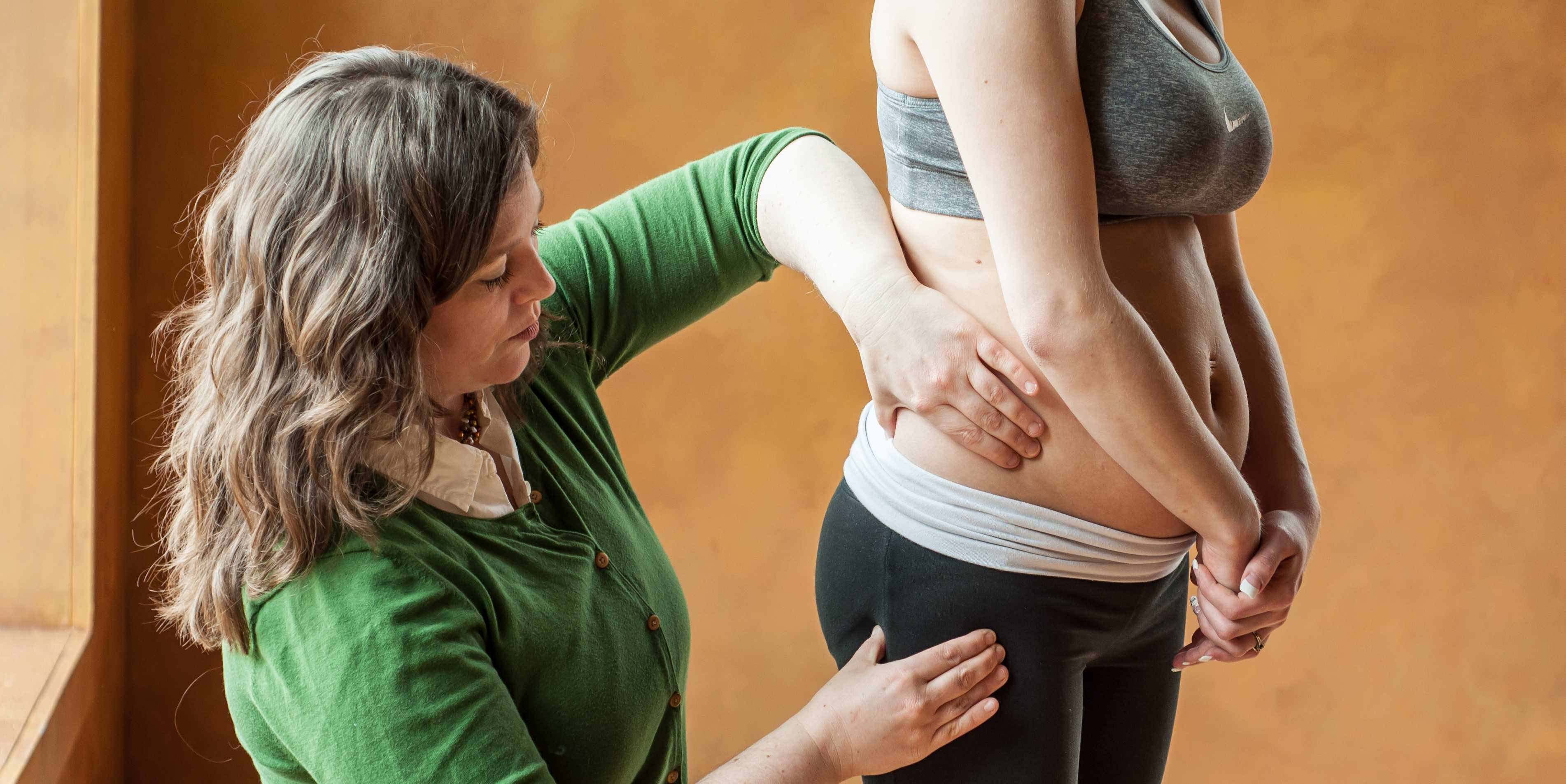For some patients presenting to the pelvic rehabilitation provider, vaginal yeast infections related to Candida are an ongoing issue, a prior causative factor in pelvic muscle tension, or a potential perpetuating issue in a patient's pelvic dysfunction. A recent research article discussing candida as a chronic disease aims to propose a definition of and diagnostic criteria for women who have chronic vulvovaginal candidiasis (CVVC). This was a prospective study involving 50 women presumed to have CVVC and 42 controls. Women with CVVC were found to have the following characteristics when compared to the control group: history of a positive vaginal Candida swab, discharge, dyspareunia, soreness, swelling, cyclicity, and worsening of symptoms with antibiotics. The authors proposed that CVVC diagnosis can be made confidently utilizing 5 or more of the following: soreness, dyspareunia, positive vaginal swab (current or past prior response to antifungal medication, exacerbation with antibiotics, cyclicity, swelling, and discharge.
The authors stated reasons for wanting to categorizing and address this issue is that they had frequently observed patients with vulvovaginal candidiasis who did not present with acute or recurrent episodes, but rather with a continuous issue. The symptoms in this population tend to improve during menstruation and ease with antifungal therapy. An interesting observation made in this article is that vaginal swab test may be negative even in the presence of other symptoms. There are several proposed theories as to why patients with chronic VVC may not have positive cultures (which is required for a diagnosis of acute or recurrent VVC) including that a woman may have treated herself with anti fungal medication prior to testing, that CVVC is a hypersensitivity reaction, or that bowel Candida is what sets off the vaginal reaction. The authors also assert that a complaint of itching is not in and of itself a sensitive marker that should be used for diagnosing any type of VVC.
With issues of high cost and self-medication available over the counter (often used without proper diagnosis awareness of symptom differentiation can be useful in the pelvic rehabilitation environment. If a patient is self-medicating with topical vaginal anti fungal medication, yet presents with symptoms more consistent with chronic vulvovaginal candidiasis, the article asserts that oral medications (a daily dose for up to or more than 6 months rather than a weekly dose) is less likely to cause irritation to the involved tissues, is less expensive, and is more effective.
The diagnostic criteria used in the study for CVVC is that a patient would need to have one major and 5 minor criteria, while a presumptive diagnosis would require 1 major and 3-4 minor criteria. Major criteria includes having chronic, nonerosive, nonspecific vulvovaginitis. Minor criteria includes positive vaginal swab (present or prior soreness, cyclicity, dyspareunia, prior positive response to anti fungal therapy, worsening with antibiotics, swelling, and discharge. While medical providers are left to diagnose and prescribe the appropriate medical treatment, pelvic rehabilitation providers are able to ask appropriate questions and communicate with the patient and provider(s) about suspected symptoms and concerns. Awareness of varying causes of vaginal soreness, skin irritation, and chronic VVC adds to our level of expertise in directing patients towards efficient healing.
Chronic vulvar pain and differential diagnosis are topics covered in our Pelvic Floor Series Level 3 class. Fortunately, if you sign up quickly you may still catch one of the remaining seats in our San Diego PF3 at the end of this month!
While hysterectomy is the second most common surgery performed on women; hysterectomy rates in the US have been declining as awareness improves about minimally invasive alternatives. According to the National Women's Health Network (NWHN hysterectomy may be associated with increased risk of heart attack, surgical complications, urinary dysfunction, fistula, UTI's, sexual dysfunction, depression, and hormonal deficiencies. The NWHN describes medical necessity for hysterectomy as occurring in cases of invasive cancer, unmanageable infection or bleeding, and uterine rupture or other serious peripartum complications.
What can a woman do as an alternative to surgery? For fibroids, medication, laser ablation, cryosurgery, and myomectomy may be options available to a woman. For precancerous cells or non-cancerous growths, a LEEP procedure or cryosurgery can be performed, or a partial rather than a complete hysterectomy can be completed. Endometrial ablation or dilation and curettage (D&C) can be used to remove the lining of abnormal tissue. Endometroisis may be managed with laparoscopy, pain medication, and hormone therapy, and symptoms of a uterine prolapse may be aided by a pessary, suspension surgery, or by pelvic rehabilitation. (Hysterectomy, 2005)
In an article by Solnik and Munro (2014) indications and alternatives to hysterectomy are discussed. The authors emphasize that the physician must make every effort to determine the true etiology of the patient's pain, and they caution that women who have chronic pelvic pain "…should be counseled against hysterectomy…" In the clinical practice of the pelvic rehabilitation provider, there is value in being aware of the alternatives to the extent that we can present the current options available to a patient. Directing women to discuss alternatives to hysterectomy with their medical providers may be helpful, and directing women to websites such as the National Women's Health Network or womenshealth.gov can allow the patient to explore options for herself.
If you are interested in learning more about advanced concepts in pelvic rehabilitation such as clinical reasoning regarding patients who are candidates for hysterectomy or conservative care for symptom management, the PF3 Course in the pelvic floor series is an excellent class. Click here to find out when you can sign up for this popular course!
References
Hysterectomy. (2014). Retrieved April 16, 2014 fromhttps://nwhn.org/hysterectomy.
SOLNIK, M. J., & MUNRO, M. G. (2014). Indications and Alternatives to Hysterectomy.Clinical obstetrics and gynecology,57(1 14-42.
Prostate removal via open, laparoscopic or robotic surgical techniques has been a treatment of choice for patients with prostate cancer. Historically, patients have been keen to inquire about "nerve-sparing" procedures for prostatectomy with a goal of reducing erectile dysfunction or urinary incontinence, two common unwanted side effects of prostate surgery. Research published in Prostate International journal proposes that exquisite knowledge of fascial anatomy is a key to minimizing negative impact from surgery caused by damage to the prostatic neurovascular bundles. The authors in this paper point out that anatomical controversy exists in the literature and that the anatomy is still being investigated, increasing the surgical challenge for those physicians who aim to identify the structures.
The pelvic organs are covered by pelvic, also called endopelvic, fascia, that is commonly divided into two layers: that which covers the viscera (wrapping around each organ structure and the parietal component which covers the medial levator ani, obturator internus, and piriformis. Access to the prostate gland is gained by an anterolateral incision through the endopelvic fascia at the fusion of the visceral and parietal fascia, according to the article. Layers of prostatic fascia and the endopelvic fascia attach laterally at the tendinous arch of the pelvic fascia, and these structures attach to the puboprostatic ligaments. The puboprostatic ligaments anchor the prostate to the pubic bone, creating an important aspect of continence through fascial tension and support.
While nerve-sparing techniques have focused on preserving pelvic plexus autonomic nerve fibers, the authors argue that there is not a definite anatomy of the periprostatic nerve fibers, possibly contributing to the variability in surgical outcomes reporting for nerve-sparing procedures. Various approaches have been detailed in the literature, and are described in this article, with emphasis on dissection plane and intra- and interfascial techniques utilized.
This is a full access article with images and details beyond what most pelvic rehabilitation providers need. What is of great interest across professions is the recognized need for acute anatomical knowledge with application of skilled techniques with such anatomy in mind. The authors conclude that "…the relation of the periprostatic fascial layers on the anterior, lateral, and posterior sides of the prostate should be of great interest. A better understanding of the relation between nerve fibers and pelvic fascial layers is crucial…" Most of us were never introduced to detailed pelvic anatomy, male or female, in school. To learn more about male pelvic anatomy, you can attend either the pelvic floor series course that introduces male pelvic health, called PF2A, offered in October in St. Louis- this is the only PF2A with open seats this year. You can also attend the Male Course, offered again this year in October in Tampa.
Research led by Mei Fu, associate professor of Chronic Disease Management at New York College of Nursing, offers support for a preventive approach to lymphedema following breast cancer treatment. 140 women who were followed for 12 months were included in the study and outcomes included limb volume measurement from baseline (prior to surgery 2-4 weeks post-surgery, and at 6 and 12 months. Lymphedema was defined in the study as a 10% or greater increase in limb volume. 134 women completed the study, with 97% maintaining limb volume.
Of the subjects studied, axillary lymph node dissection was completed in almost 60%, and approximately 40% had sentinel lymph node biopsy. The self-care strategies in the research included shoulder mobility exercises, muscle-tightening deep breathing, muscle-tightening pumping exercises, and large muscle group exercise such as walking, swimming, yoga) to promote lymph health. The participants were also instructed in nutritional information aimed toward maintaining body mass index (BMI.) 97% of the women were also able to maintain BMI at the 12 month follow-up.
The majority of women in this pilot study also reported that the educational program helped in understanding of risk reduction for lymphedema, and also reduced their fear and anxiety about the condition. This type of research is very encouraging towards empowering patients following breast cancer. The authors note that a larger study population in a randomized, controlled trial will offer further information to guide clinical program development. While this study focused on participants with a diagnosis of breast cancer, is it likely that similar lifestyle and activity education would offer prevention of abdominopelvic and lower extremity lymphedema?
Within the Institute's Oncology series, you can learn more about these topics at several continuing education courses. To learn more about lymphedema, check out the Rehab for the Breast Oncology Patient, or the Oncology and the Pelvic Floor Courses (divided into male and female topics.) The next opportunity to take the Oncology for the Pelvic Floor Female: Reproductive and Gynecologic Cancers is June 21-22 in Florida. There a few seats left, so sign up soon!
Research by Wong and colleagues published by the American College of Obstetricians and Gynecologists reported on the incidence of postpartum lumbosacral and lower extremity injuries. Of 6048 women who were interviewed, 56 had a new injury, confirmed by physiatrist evaluation. The researchers noted that "Women with nerve injury spend more time pushing in the semi-Fowler-lithotomy position than women without injury." The researchers also noted that women who were nulliparous (had not given birth previously who had an assisted (forceps or vacuum) birth, or who experienced a prolonged second stage of labor, were at increased risk of nerve injury.
The most common nerves involved included the lateral femoral cutaneous nerve, followed by the femoral nerve. Radiculopathies occurred at the L4, L5, and S1 levels. The authors make the following recommendations: changing positions frequently during the pushing phase, avoiding prolonged thigh flexion, avoiding extreme thigh abduction and external rotation. Other labor-related perineal nerve injuries have been documented by Sahai-Srivastava et al. to occur due to prolonged squatting or to prolonged pressure from birth attendants at the knees.
The research by Wong and colleagues highlights the important of interviewing patients about past and current symptoms, birth histories including length of time spent pushing and in what positions a woman was pushing. Teaching a woman and her birth assistants about providing support to the birthing woman's body can be very helpful; a birthing woman may welcome support of a limb, yet avoiding over-compression or sustained positions without intermittent breaks may reduce risk of nerve injury. Because the authors also noted a correlation between nerve injuries and maternal pushing at higher fetal stations (the fetus had not descended as far into the birth canal they recommend attempting to shorten active pushing time by allowing the fetus to descend further prior to pushing. (This concept in itself is a very interesting topic to be followed-up on in another post!)
To discuss issues of postpartum evaluation and nerve dysfunction, you can sign up for the Care of the Postpartum Patientor our Postpartum Special Topicsin which we dedicate an entire lab to this topic.
A qualitative study based in patient interview aimed to identify the reasons that survivors of gynecologic cancer do not seek help for pelvic floor dysfunction (PFD). Interviews of 15 patients by a medical provider asked both open-ended questions and provided a list of reasons why a patient may not seek care for PFD. (These reasons were compiled by the researchers based on clinical experience and on literature reviews.) Reasons for not seeking care for PFD were separated into four categories: that the pelvic floor symptoms in comparison to cancer diagnosis seemed bearable, the specialists did not make any recommendations about the PFD, the patient did not want to go to the doctor or hospital, and the patient or provider was unaware of treatment options. Of the women included in this study, cancer diagnoses included cancer of the cervix, endometrium, and vulva, and types of pelvic floor dysfunction included urinary and/or fecal incontinence, overactive bladder, constipation, painful bladder, or obstructed voiding.
One of the primary reasons women did not seek care for PFD was lack of knowledge about potential treatments. Another frequent statement from the 15 women interviewed is that the pelvic floor symptoms, when compared to dealing with cancer, were "bearable." The authors in this research suggest that the medical community needs to consistently give attention to PFD following cancer treatment. In addition to screening for PFD, the medical community should provide "…timely referral to pelvic floor specialists."
In regards to the first category of reasons for not seeking referral, women made statements such as feeling "lucky" to only have PFD rather than the cancer, or that the PFD symptoms were not as severe as other symptoms related to cancer diagnosis and treatment. Other women reported that they had symptoms prior to cancer treatment and were "used to them." Reasons women reported for not wanting to visit the doctor or hospital included fear that the symptoms meant that the cancer had returned or that the symptoms were too embarrassing. When discussing the lack of awareness about treatment for PFD, some women assumed that the physician would have referred for treatment if therapy was warranted or needed, and others did not not know where to go for help. Some women even reported that the oncologist stated that there was no treatment available to help with symptoms of PFD.
This information begs a reaction from pelvic floor therapists everywhere. How can we best interface with both these patients and the physicians? How can we infiltrate the journals, community lectures, national conferences, and also educate our peers about available options? While women who have suffered from cancer and pelvic floor dysfunction are not unique in the lack of awareness about treatment for PFD, common treatments for cancer can create increased tissue dysfunction, fatigue, and comorbid issues such as lymph dysfunction which complicate recovery. If you would like to work more with patients who have dealt with cancer diagnoses, but have a lot of questions about how to appropriately direct treatment, the Institute has new coursework developed by Michelle Lyons, who brings her expertise to this patient population. The next opportunity to take Oncology and the Pelvic Floor A: Female Reproductive and Gynecologic Cancers is this June in Orlando.
A recently published review about peripartum management of gestational diabetes mellitus (GDM) confirms that use of recommended guidelines, testing, and follow-up "…seems suboptimal at best and arbitrary at worst." Despite the fact that during pregnancy, a mother and her fetus experience health risks related to gestational diabetes, screening remains low across countries and study settings. Once a woman is diagnosed with GDM, she is at risk for developing postpartum Type II diabetes. The necessary follow-up testing is also not consistently completed, and many new mothers are challenged by recommended lifestyle modifications.
Unfortunately, women who develop gestational diabetes may not have any symptoms. Medical providers typically screen for GDM with an oral glucose tolerance test between weeks 24-28, or earlier if risk factors are present. According to Medline Plus, excessive thirst or increased urination may be present as a symptom. Blurred vision, fatigue, weight loss despite increase in appetite, frequent infections, or nausea and vomiting may also occur. A common challenge of diagnosing women with disease conditions during the peripartum period is that symptoms such as fatigue, nausea, or changes in hunger and thirst may occur as a typical part of pregnancy or the postpartum period, so a woman may not report all symptoms to her provider. Risk factors for patients in developing gestational diabetes can include age over 25, having a family history of diabetes, giving birth to a child weighing greater than nine pounds, having high blood pressure, or a high body mass index (BMI) prior to pregnancy.
What is the potential impact for pelvic rehabilitation providers who work with women during the prenatal or postpartum period? Because women who develop GDM often have larger babies, there may be an increased risk of a cesarean section, or injury to the pelvis during childbirth. While pregnant, a woman with GDM may have elevated blood pressures. In the postpartum period, the risk for developing Type II diabetes increases, yet may not develop for 5-10 years. Medical providers and patients each experience barriers to screening and follow-up, as described in the open access article available here. Barriers for health care providers can include not seeing the patient during the screening period, not having appropriate resources available for testing, lack of coordination between different providers, and patient refusal of the test. Even if a woman is identified early as having gestational diabetes, and is informed about appropriate diet and exercise modifications that will reduce the risk of developing Type II diabetes in the postpartum period, poor self-efficacy and social support may limit a woman from achieving her desired goals.
As is often asked regarding review of articles in this blog, what is the role of the pelvic rehabilitation provider? If a rehab provider is aware of the risks for the condition, we can respectfully inquire if the patient has been screened, and encourage her to follow-up during the 24-28 week window as needed. If a woman complains of fatigue or blurred vision, or changes in her habits that "don't seem right" to the provider or the patient, a referral to the managing medical provider can be made. During the postpartum period, providing community education, health and wellness screening, or clinical screening can be completed. It is necessary for rehab therapists to assist in identifying barriers to exercise and proper nutrition, and coordinate with a patient's resources as able. Having a support team such as nutritionists, exercise therapists, and social services can have a positive impact, as many women are focused on the daily acts of raising a child and have too little focus on their own health.
If you are interested in learning more about the prenatal period, the postpartum recommendations for gestational diabetes, and exercise prescription, find out which of the Perinatal Series of continuing education courses fits into your schedule. (These courses do not need to be taken in any particular order. )Therapists will find a blend of evidence-based support related to peripartum issues as well as evaluation and intervention techniques to apply in the clinic. The next Care of the Pregnant Patient takes place in April in Maywood (near Chicago Care of the PostpartumPatient is in Oakland, CA, in March, and the next Peripartum Special Topics course happens in Texas in October.
Postpartum depression is a very real, frequently occurring phenomenon that has potentially serious adverse effects on the mother, the child, and on the family as a whole. Serious consequences can include, according to McCoy et al, marital disruption, child neglect or abuse, and suicide. While there are many factors including hormonal shifts that can influence a woman in the postpartum period, strong predictive risk factors can include age less than 25, readmission to the hospital, inability to breastfeed, and lower self-reported health of the mother. A rehabilitation professional is uniquely poised to monitor a postpartum woman over an episode of care and can screen for changes in mood, behavior, or identify risk factors.
Screening for postpartum depression is often completed clinically utilizing the Edinburgh Postnatal Depression Scale. There is a shortened version, the EPDS-3, that asks about self-blame, states of anxiety, and feeling scared, and the shortened version has been documented to have excellent sensitivity. Postpartum psychosis and postpartum post-traumatic stress disorder can also negatively impact a woman's health and a provider needs to be alert for concerning symptoms.
Satisfaction with birth experience has been found to be a risk factor for developing postpartum depression. While we cannot affect a mother's birth experience after the fact, we can offer witness to her feelings, thoughts, and concerns, and we can offer support as rehabilitation professionals. What better way to learn about a patient's challenges and current sense of health than to allow a woman to share her experiences about pregnancy, labor and delivery. Inquiring in an open, non-judgmental manner about a patient's history can provide space for a patient to describe her experiences, perceptions, joys, and concerns. Having a working knowledge of the risk factors allows for therapeutic conversations and referrals in the clinical setting.
In the postpartum course, we discuss the above issues as well as how to observe, listen to, and assess a woman who may need referral for postpartum mental health screening. We also discuss the recent research shedding light on issues of depression in new fathers. The next opportunity to take Care of the Postpartum Patient is in Oakland, CA at the end of March. A great resource page on the womenshealth.gov website is the "Depression During and After Pregnancy Fact Sheet" that can be printed out and shared with patients. Other links and information is also located on the website that can be accessed by clicking here.
Abnormal hip joint development causes 25-50% of all hip disease, according to an article by Goldstein and colleagues on hip dysplasia in the skeletally mature patient. An acetabulum that is dysplastic tends to be shallow and anteverted while the dysplastic femur tends to have a small femoral head and an increased neck shaft angle. These abnormalities cause increased joint contact pressures and lead to joint breakdown in the hip, and are associated with issues such as altered hip and knee biomechanics, hip instability, hip impingement, and labral or chondral dysfunction.
Developmentally, the altered joint surface contact also affects acetabular development: the well-formed contact pressure in healthy hip development helps to deepen the acetabulum. The shape and position of the acetabulum and femoral head will also influence the relative angle of the femoral neck, represented as retroversion or anteversion. Soft tissue changes occur in response to the altered bony mechanics that affect length-tension curves in the muscles and therefore affect muscle performance. Because of the primary and secondary dysfunctions that can occur with hip dysplasia, early recognition of hip dysfunction is important.
Measurements for hip position are easy to implement in the clinic and can include Craig's Test for femoral anteversion/retroversion. Treatment approaches focusing on hip abduction strengthening have been demonstrated to improve hip stability in patients with dysplastic hip. With shared structures including muscles between the hip and pelvis, pelvic rehabilitation providers must be able to assess the hip's influence on conditions of pelvic pain or other dysfunctions. To learn about detailed examination and treatment of the hip, there is still time to register for the Institute's upcoming continuing education course instructed by Ginger Garner.
A recent MedScape articlewarns that "no amount" of alcohol is safe in terms of avoiding cancer risk. Although the mechanisms between alcohol and cancer are not well understood, according to the article, alcoholic beverages can contain at least 15 ingredients that are carcinogenic, such as acetaldehyde, acrylamide, aflatoxins, arsenic, benzene, cadmium, ethanol, ethyl carbamate, formaldehyde, and lead. Potential causative mechanisms for alcohol-related cancer include that alcohol interferes with folate metabolism, and that in relation to breast cancer, alcohol can increase estrogen levels and stimulate mammary cell growth. Hard liquor can affect the oral cavity, the esophagus (especially hard liquor and the colon, rectum, and liver.
According to the author, patients who have health issues related to cancer should be warned to stop using alcohol and should be referred to cessation programs. Pregnant women and youth should be counseled not to drink at all. Alcohol consumption is recommended to be limited to 1 drink per day in women and 1.5 drinks per day for men. Alcohol screening is recommended as a "routine" part of an office visit. Whether the screening is completed on a written or electronic intake, or as part of the verbal history, patients should be asked to report the number of drinks per day, week, or month. Validated screening tools and referral resources that are helpful for patients are listed in this article written by Dr. Friedan.
Smoking in combination with alcohol can worsen the risk for detrimental health effects, especially in the oral cavity, the pharynx, larynx, and esophagus. Physical therapist intervention as a part of smoking cessation education can be an important and effective part of health management. Bladder health is also negatively impacted by smoking, as described in an earlier blog post. As physical therapists and other pelvic rehab providers become more involved in wellness education and integrate smoking and alcohol consumption into their clinical practice, increased knowledge about cancer-related lifestyle issues can be helpful. The Institute offers our Oncology series including a Female and Male focused course on cancer and the pelvic floor. The next opportunity to take Oncology and the Pelvic Floor: Female Reproductive and Gynecologic Cancers is June in Orlando. If you are interested in hosting one of our oncology courses, contact the Institute!




































